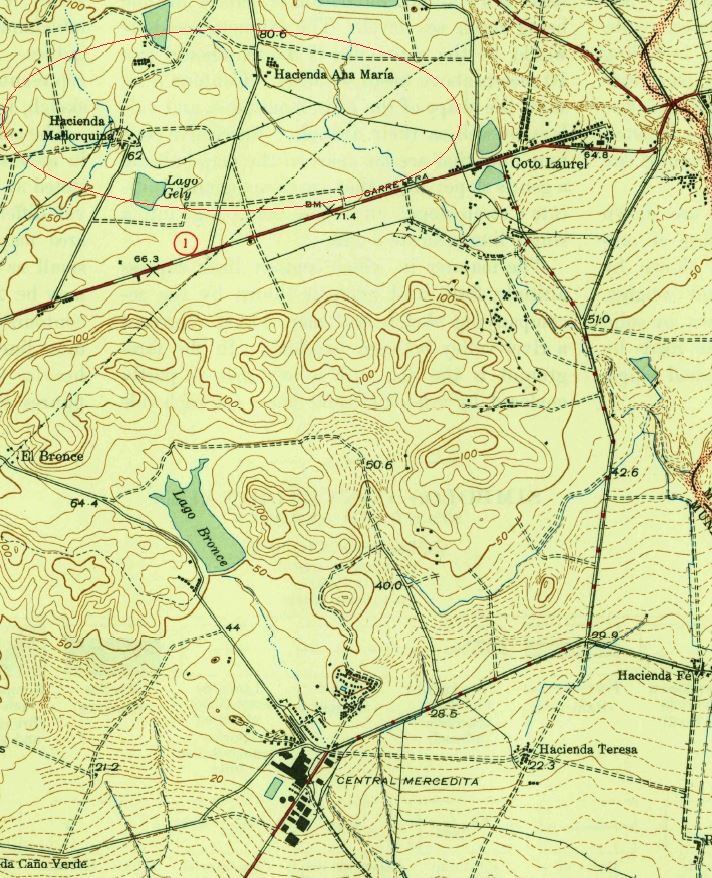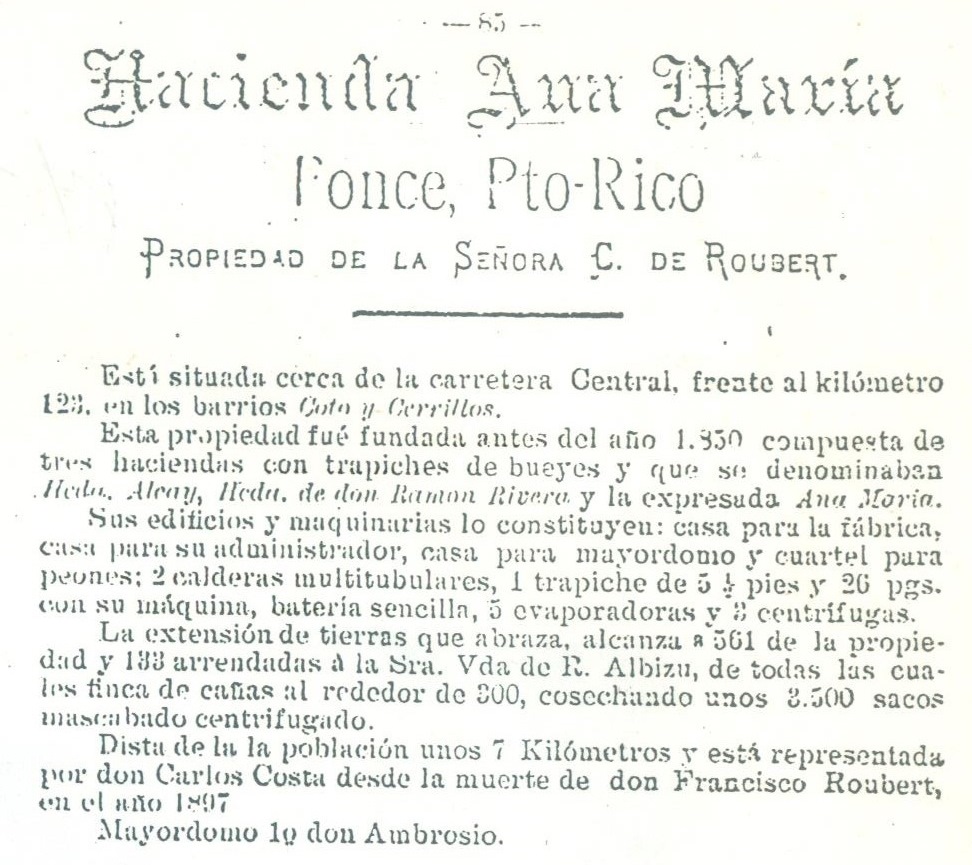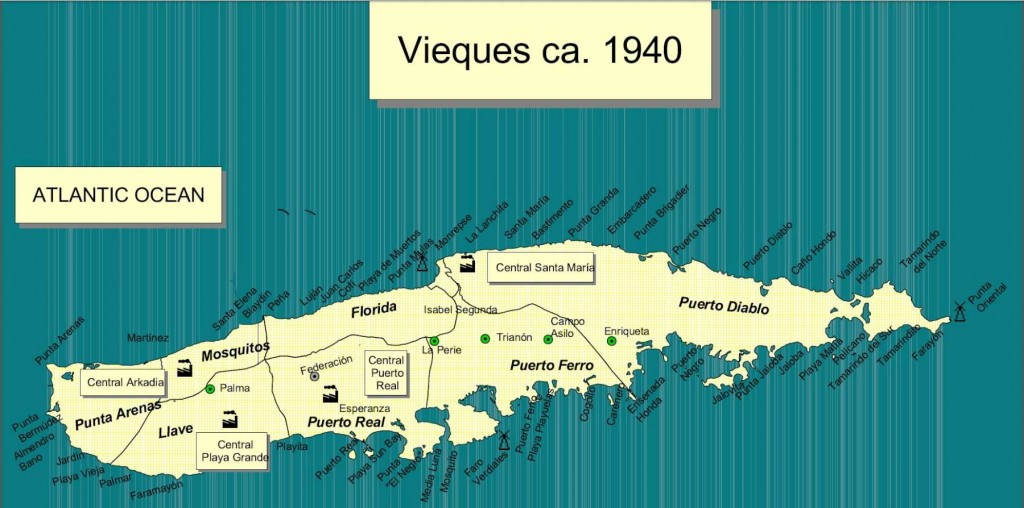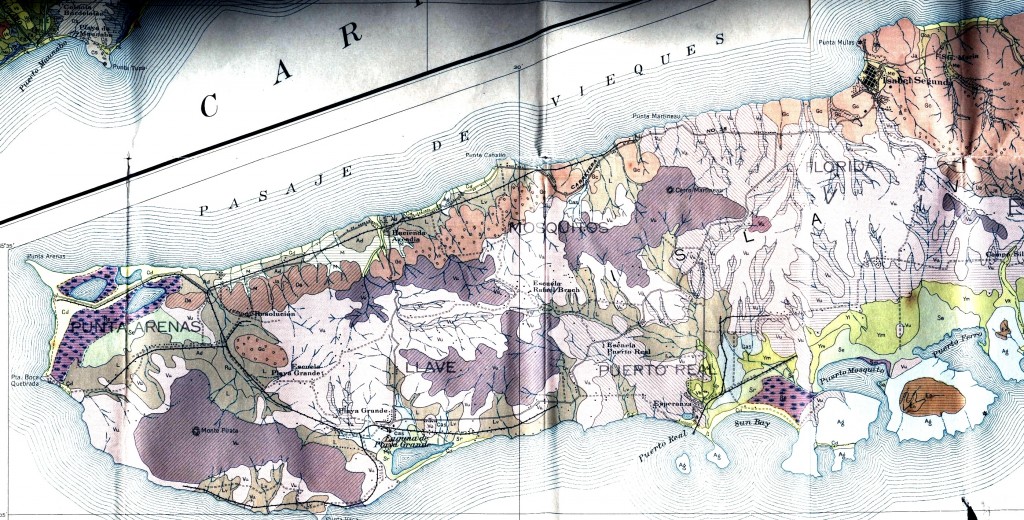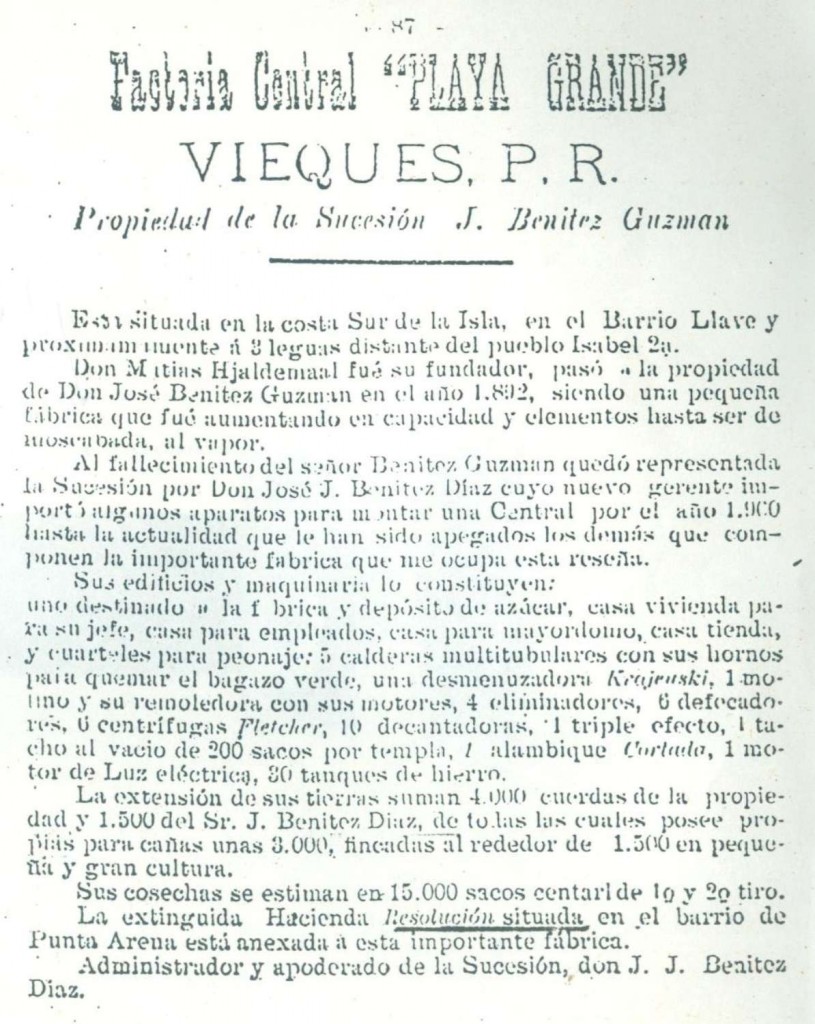 National Atlas of the United States
National Atlas of the United States
—
Fajardo Development Co. Railroad
Central Fajardo
Fajardo Sugar Co.
Fajardo, Puerto Rico
Meter gauge
The Fajardo Sugar Company was incorporated in Connecticutt in March of 1905. By power of Franchise #63 enacted by the Executive Council of Puerto Rico on 10/27/1905, the Fajardo Development Co. was granted the right to construct, maintain and operate a public service railway between the towns of Mameyes and Naguabo, for the conveyance of passengers and freight for hire. The Fajardo Sugar Co. of Porto Rico was reincorporated on 2/28/1919 in Puerto Rico. The company owned Central Fajardo (located at the southeastern limits of the city of Fajardo on the east coast, the Loiza Sugar Co. and its affiliated mill Central Canovanas, the Fajardo Development Co. Railroad, and the Fajardo Sugar Growers Association which owned 26,410 acres and leases another 4,670. Loiza Sugar Co. had been acquired in October of 1925. The original owners were Lorenzo Armstront, James Bliss Coombs and Henry Couger. At some point, Jorge Bird Arias is shown as the owner or manager, which is not yet clear.
Under ordinance # 176, an extension for one year was granted to the FDC to complete the railroad from Mameyes to Naguabo in 1909. In December of 1909, the Executive Council issued Franchise #184 granting the FDC the right to extend its railway to Playa Fajardo, and to operate a pier at such location for shipment of sugar and molasses. This would not be a deep water terminal, and products would be conveyed by lighters to larger vessels achored at deep water.
Formerly, a franchise had been given to the American Railroad to extend its tracks eastward from Carolina to Mameyes, to connect with the Fajardo Development Co. railway, but this was not carried out. On 2/25/1927, the Executive Council issued Franchise # 581 permitting the FDC to extend its railway westward from Mameyes to Carolina to connect with the American Railroad. One of the principal obstructions to building this extension was the replacement of the wooden bridge built by the Loiza Sugar Company over the Rio Grande de Loiza river just west of the Canovanas mill. American Bridge Co. built this bridge for the railroad at a cost of $59,473, and made it dual-gauge (meter and 30″ gauge) to facilitate access by the Canovanas railway to its fields on the west shore of the river.
An additional franchise granted the FDC permission to extend its trackage from Naguabo to a nearby connection with the Ferrocarriles del Este, making the combined railroad system complete from San Juan to Humacao.
Under Fajardo-Eastern Sugar Associates, the railway was also granted additional extensions to reach Playa Humacao and Central Pasto Viejo.
At the beginning, Central Fajardo had a daily grinding capacity of 2000 tons of cane. The factory underwent many improvements over the years. By the 1930’s capacity had been increased to 3800 tons daily. In its final state, the mill was capable of grinding 5400 tons of cane daily. In 1970, Central Fajardo and the former FDC were purchased by the Land Authority of Puerto Rico (ATdePR), which operated the mill until it ground its last harvest in 1977. Some locomotives were sold off of the Island, while many were transferred southward to the Ponce & Guayama and Central Mercedita railroads under the new government agency Corporacion Azucarera de Puerto Rico (CAdePR).
The Fajardo Development Co. railway was one of the best maintained systems on the island. It was the only mill to buy a full-size steam weedburner to keep the right-of-way free of vegetation. Its locomotive fleet was second only to the American Railroad in terms of the power of its engines. The FDC remained loyal to the proven-reliability of locomotives built by American Locomotive, but turned to Baldwin Locomotive Works for its large weedburner.
Locomotive #3, a tank engine when delivered, was purchased to pull the passenger train that the Executive Council obligated the railroad to operate. The daily train between Naguabo and Mameyes also carried mail. At both ends of the line, bus service was provided. A bus connected passengers with the American Railroad train to Carolina, while a similar service made connection between the Naguabo terminus and downtown Humacao.
When the line was complete from Carolina to Humacao, American Railroad locomotives and coaches operated by agreement over the FDC and the Ferrocarriles del Este, giving service from San Juan to Humacao on a daily basis. From all accounts so far, freight, however, was transported by the locomotives of the FDC. It was picked up at Carolina and and any cars not destined for customers on the FDC, were taken to the connection with the Ferrocarriles del Este near Naguabo for exchange.
The FDC operated a number of branchlines, some very short and some quite lengthy. The mainline from Carolina to Naguabo area was 65 kms. in length. Following are the branchlines the railroad operated:
Carmelita Branch – .54 miles
Monserrate Branch – 1.90 miles
Union Branch – 1.90 miles
Juan Martin Branch – 1.00 miles
Rio Arriba Branch – 8.60 miles
Playa Fajardo Branch – 1.00 miles
Carolina Branch – 1.60 miles
Saco Branch – .78 miles
Aurora Branch – .54 miles
Oriente Branch – 1.60 miles
Mariana Branch – 2.10 miles
Corco Branch – .78 miles
Duque Branch – .78 miles
San Cristobal Branch – 5.90 miles
Paraiso Branch – 7.95 miles
The FDC acquired ex-Central San Cristobal Porter #1, which it renumbered # 7. This locomotive ran low on water and blew up on the Duque Branch, about 1934 or 1935, killing both the engineer and the fireman and injuring several workers nearby.
American Locomotive Co. #3 was rebuilt twice. First reports from the 1930s indicate it was a 2-6-0 with a homemade tender, but later reports indicate it was rebuilt to a 2-8-0, with a desired weight increase for traction to better facilitate reassignment to hauling sugar cane trains.
Locomotive # 9 has two distinctions to its honor. It is the last steam locomotive purchased new for Puerto Rico, and it was the largest locomotive ordered by a sugar railroad. It was also one of the last steam locomotives to run in Puerto Rico, working through the ownership of C. Brewer Puerto Rico until 1966. It was stored in Central Pasto Viejo’s enginehouse for a number of years before going to Central Fajardo, where it was to become a display at the Ferrocarril Historico.
Molasses produced at the mill was transported in company tank cars 3/4 of a mile to the company pier at Playa Fajardo. There, the Fajardo Sugar Co. had storage tanks and also a warehouse for sugar storage. Molasses was piped into lighters for transport out to deepwater vessels. Central Fajardo also produced a raw sugar in fairly large quantity.
The FDC traversed some of the island’s most lush scenery, due to its high annual rainfall and its proximity on all sides to the rain forest, El Yunque. Some of the largest cane grown on the island came from this coastal area, and irrigation was not needed in most colonias.
On 3/15/1932, delegates to the 4th annual International Sugar Congress got their third railroad ride of the day, travelling over portions of the FDC. Two trains were provided, using company coaches. The first train supposedly went westward to Luquillo and then to the company pier at Playa Fajardo, while the second train went south, climbing the Paraiso Branch. Since I personally rode this line while it was being used by the steam-powered Ferrocarril Historico, I can say the passengers that took the latter tour got the best ride. With the Fajardo River coming close to the line several times, the incredible vegetation trackside and the view of El Yunque, it would be hard to surpass this experience. This line also had the steepest of grades on the FDC system.
When the FDC began to replace its aging steam fleet, it went to another proven builder of
locomotives, Plymouth. Eventually, after purchasing a number of 30 and 40 ton, 3-axle units, it replaced its largest steamers with two-truck, B-B type diesel-electric locomotives. These occasionally were used in pairs for the long runs to Naguabo and Canovanas areas.
When the FDC was purchased by C. Brewer PR, the head of the railroad, Jorge Zampierrollo, converted sets of two locomotives as multiple-unit pairs, connected electrically so that the engineer of one unit could control both locomotives. They were paired as follows: E-442+E-443, E-444+E-445, and E-446+E-447. While they could be disconnected and used independently, they were most often seen paired, especially during the peak of the harvest. This capability was unique to this railroad and was not copied by any other on the island.
When the American Railroad abandoned its service in 1957, the FDC (Fajardo-ESA at the time) acquired one of their 47 ton General Electric diesel-electric locomotives. This locomotive was a frequent favorite of crews for the Paraiso branch. This locomotive along with two more at Guanica Centrale and its sister locomotives on the ARRCo., were of a different design than the Plymouths. The Plymouths had B-B wheel arrangements, by which the trucks are mounted underneath each end of the locomotive frame. The GE B+B wheel arrangement differed in that the frame of each truck was integral with two separate portions of the frame, which were joined in the center of the locomotive body by a pivot, allowing each to move more freely around sharper curves. While the pilot on a Plymouth is built into the one-piece frame, the pilot of the B+B locomotive is mounted on the end of each of these two frame sections, coordinating with the movement of the trucks themselves while taking a curve or passing through a switch.
90+ percent of traffic on the FDC was sugar cane, the balance made up of chemical fertilizers, lime, firewood, lumber, sand & stone, coal, oil and provisions plus production products of the mills.
The railroad had a maximum grade of 3% (on the Paraiso Branch), and a maximum curve of 16 degrees.
Ties were made of cypress and bayaonda woods from the Dominican Republic, measuring
6×8″, 6 and 7 feet in length. Shale was used as ballast on most of the railroad.
During passenger service years, stations were at Mameyes, Rio Grande, Luquillo, Fajardo, Ceiba, Naguabo-Daguao and Naguabo.
The FDC had some interesting “carros de brigada”, which, according to shop personnel, were built on the frames of some of the ex-Fajardo Sugar Growers Association locomotives used on the colonias. These cars differed from each other, and from best count totalled five in number. They were used to transport track gangs to work sites. They bore the names of Greek gods. Several survived into the Autoridad de Tierras ownership, and one was actually transferred by them to Central Aguirre for use on the Ponce & Guayama when Central Fajardo stopped grinding and the railroad was torn up.
Most of the roster of locomotives were transferred to the Ponce & Guayama and Central Mercedita railroads, but several were sold off of the island, including the GE 47 ton and four of the six Plymouth B-Bs.
—
Locomotive Roster:
In construction / En construcción
—
Other
606 sugar cane cars, all-steel, 15 ton capacity
22 sugar cane cars, all-steel, 20 ton capacity
16 flatcars, 15 ton capacity
10 flatcars, 20 ton capacity
14 gondolas, 15 ton capacity
45 boxcars, all-steel, 25 ton capacity
4 boxcars, wood, 20 ton capacity
1 combination car, 35′, American Car & Foundry, 3/23/1907 via L.W.&P. Armstrong, Agent
1 passenger coach, 40 seats, 35′, 1st class, Brill order #17350, built 6/9/1910, shipped 9/30/1910, Brill MCB 1st class trucks, mahogany sides, 33,590 lbs. weight, car # 1, named “Nicolasa Arias de Bird”
1 passenger coach, 40 seats, 35′, lst class, Brill order #48912, built 4/22/1912, shipped 7/22/1912,
#60-D 1st class MCB trucks, mahogany sides, 33,590 lbs. weight, car # 2, named “Louise”
(Both coaches sold to the American Railroad Co. in the 1930s)
8 tank cars
6 handcars
2 automobile inspection cars
1 Dependable Hardie Weed Sprayer, model SCDA
132 kms. fixed meter gauge railway, laid with 60 lb. rail on mainlines, 45 lb. on branches and sidings
152 kms. of fixed and portable 30″ gauge railway, including 4900 15′ sections of portable track to bring harvest from field to loading stations. These are operated by the wholly-owned subsidiary, the Fajardo Sugar Growers Association, on the various colonias.
—
Ver / See:
—
Mapas / Maps
Eastern Puerto Rico / Este de Puerto Rico
(Photo copies of U.S. Geological Survey maps / Fotocopias de mapas del U.S. Geological Survey)
—

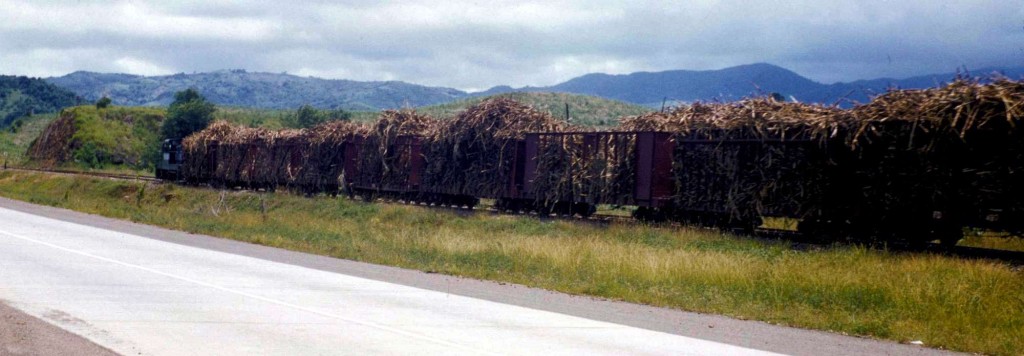
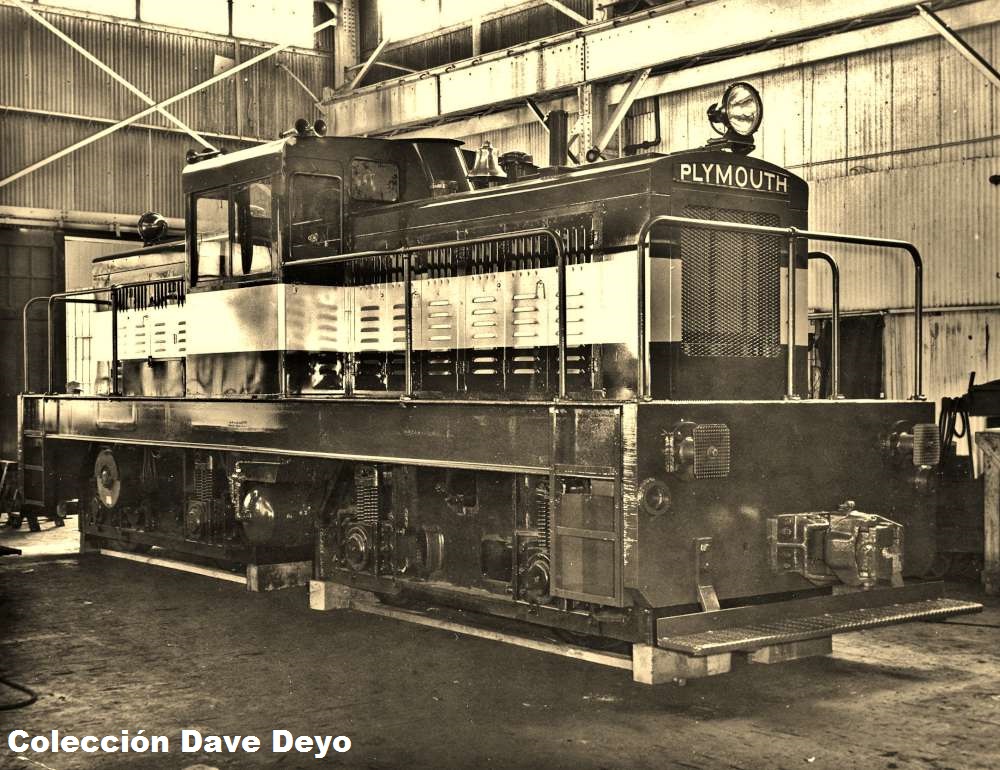
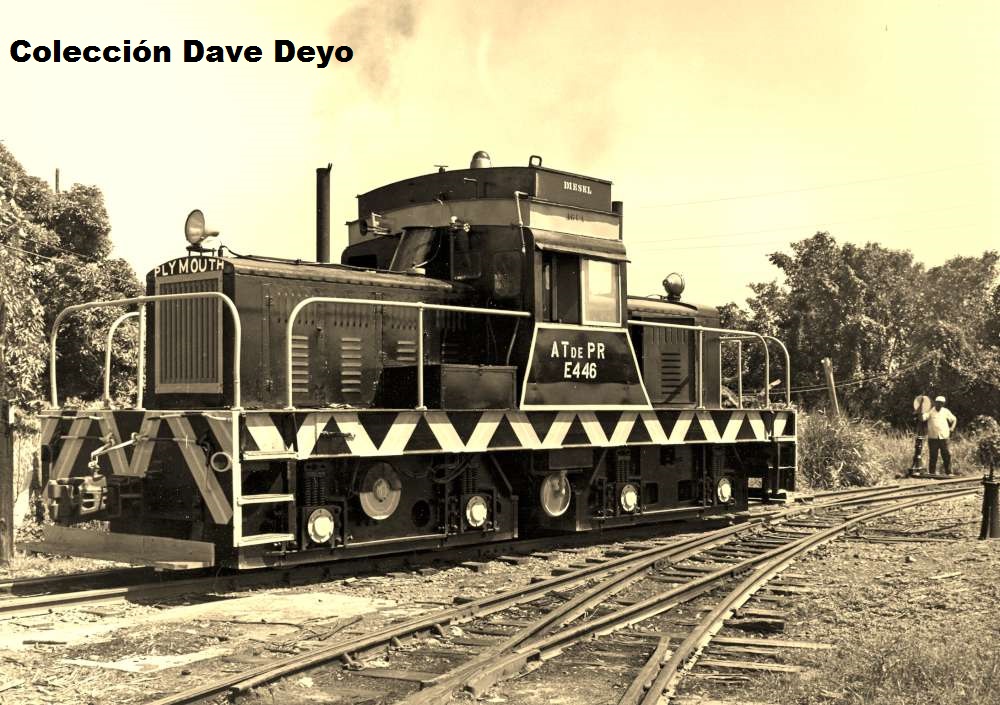
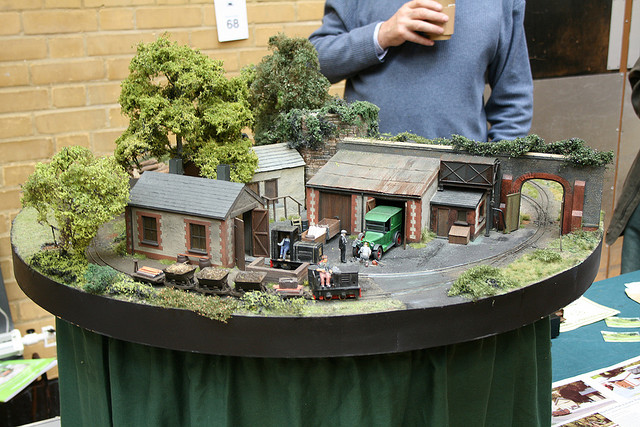

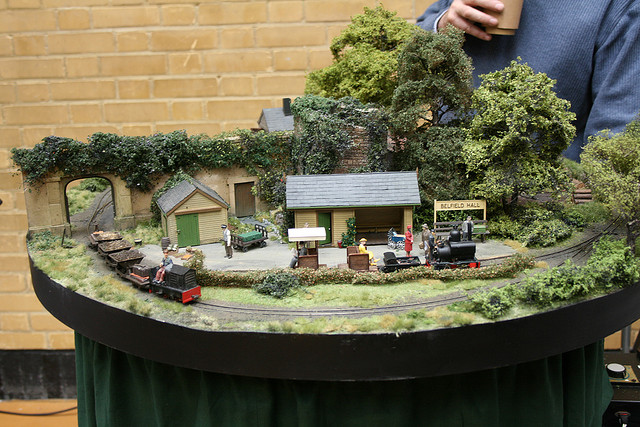
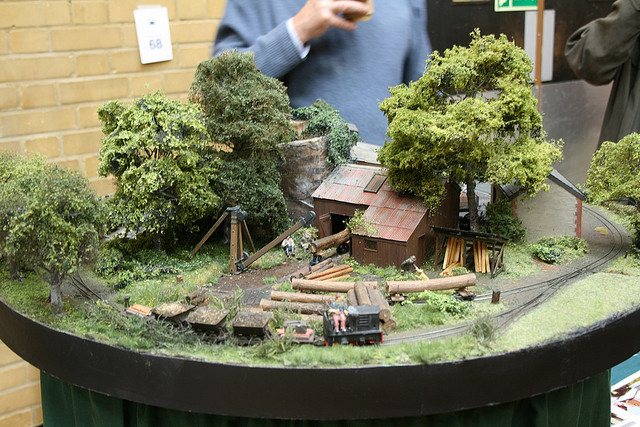
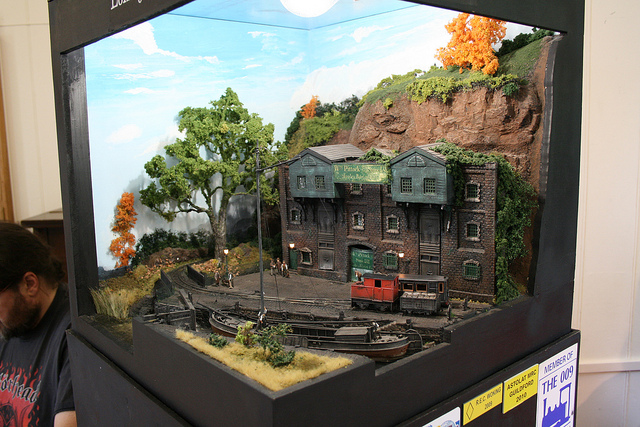
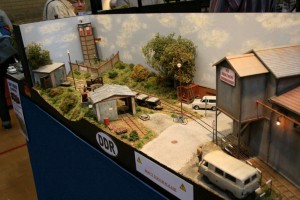
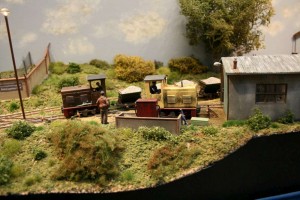
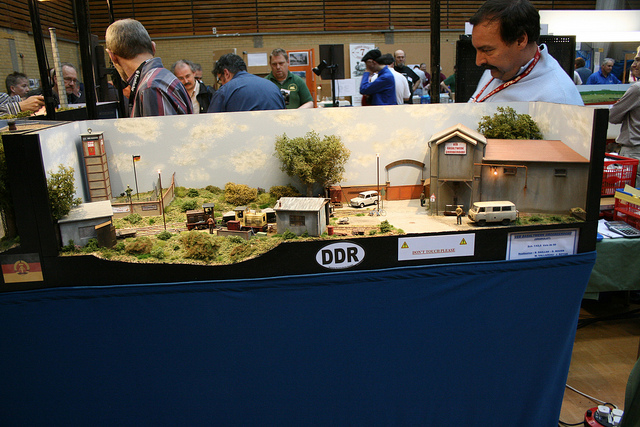

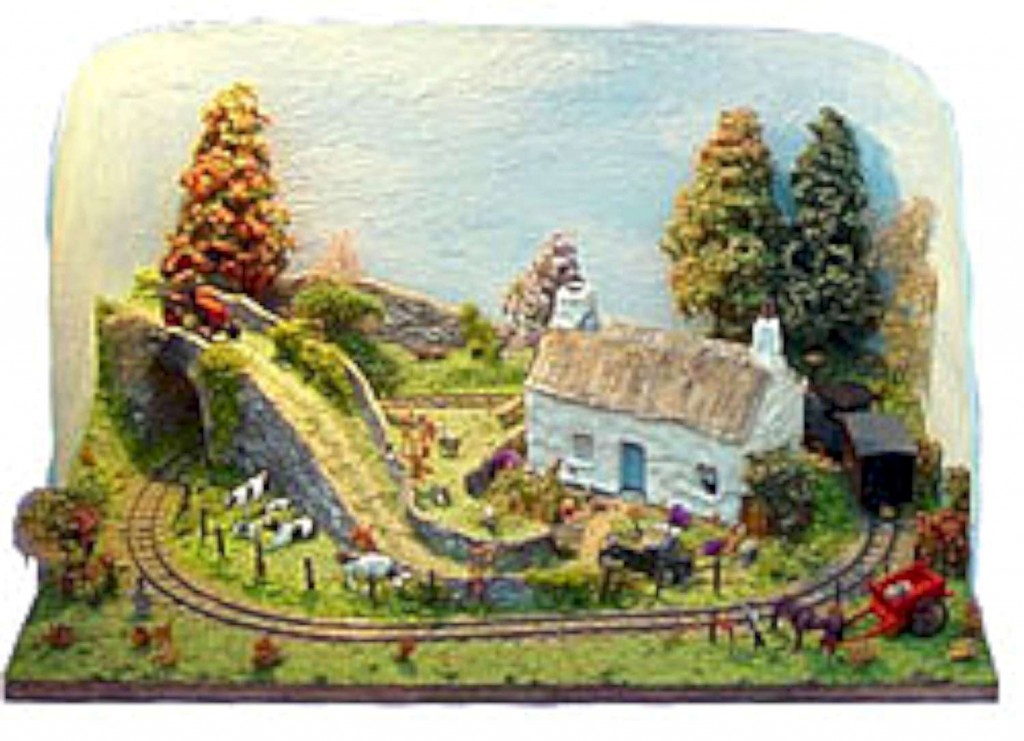
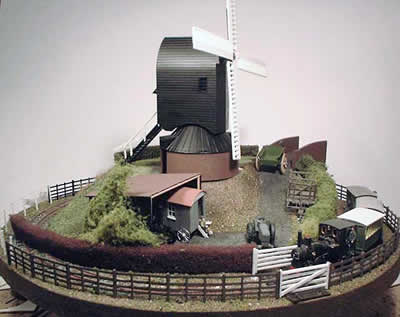 Black Dyke Mill. Chris O’Donoghue’s pizza based around a windmill.
Black Dyke Mill. Chris O’Donoghue’s pizza based around a windmill.
